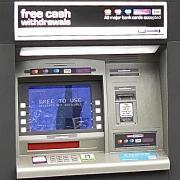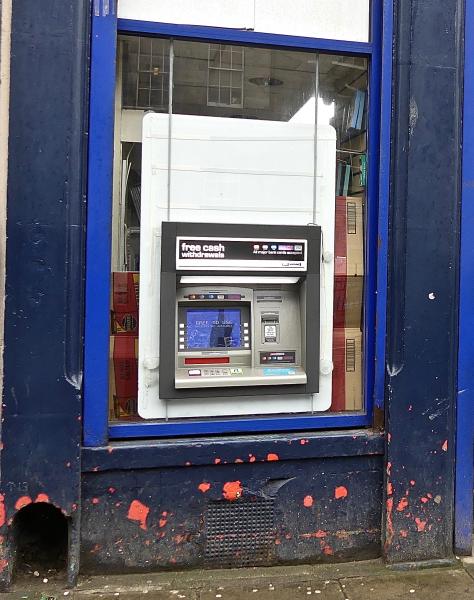
Edinburgh Council’s Development Management Subcommittee has reached decisions on two local cases highlighted by the Spurtle in recent months.
The first concerns a retrospective application by Notemachine UK Ltd to postion a new ATM in the window of Lifestyle Express at Category B-listed 20 Broughton Street (see Breaking news, 11.4.18).
This application was refused and enforced because:
The proposal has resulted in the installation of an incongruous and visually disruptive feature within the principal elevation of a shopfront. The proposal does not represent an improvement on the existing shopfront design and has a detrimental impact on the character and appearance of the New Town Conservation Area and the outstanding universal value of the World Heritage Site. The proposal is contrary to policies Des 13, Env 1 and Env 6 of the adopted Edinburgh Local Development Plan and the Council's Non-Statutory Guidance for Businesses.

Spurtle welcomes this concise dismissal of Notemachine’s specious ‘Heritage Statement’ assertion that the cashpoint machine would have ‘minimal impact’.
We’re also pleased that Notemachine’s build-first-and-explain-afterwards approach to the Conservation Area and Edinburgh World Heritage Site has on this occasion proved unsuccessful.
Related applications for advertising and listed building consent here were also refused on similar grounds, although for reasons we don’t understand the LBC decision was not enforced.

The second case concerns BT’s multiple applications to remove 26 payphones from central Edinburgh and replace them with 12 InLink units (see Breaking news, 26.4.18). The DMS refused consent on the grounds that:
1. The proposal is contrary to the Local Development Plan Policy Env 6 in respect of Conservation Areas - Development, as it will adversely affect the spatial character and appearance of the conservation area.
2. The proposal is contrary to the Local Development Plan Policy Env 3 in respect of Listed Buildings - Setting, as it will have an adverse impact on the setting of the listed buildings.
3. The proposal is contrary to the Local Development Plan Policy Env 1 in respect of Old and New Towns World Heritage Site, as it will harm the Outstanding Universal Value of the World Heritage Site.

Spurtle has mixed feelings about this case. We think the proposed new units would have been more attractive and useful than the phoneboxes they replaced. However, we agree with Historic Environment Scotland that they would have been visually imposing and we don’t like the potential glaring distraction of multiple digital displays. Furthermore, it makes no sense to us to decide in favour of such introductions before the Council’s wider consultation on the design of George Street and the First New Town have progressed further.
Overall, we think this is the right decision (and we we wish a similar conclusion could have been reached on JCDecaux’s successful applications for bus shelter adverts on Hanover and Frederick Streets back in May [Breaking news, 23.3.18]). Off-the-peg solutions to infrastructural problems and advertisement opportunities simply won’t do here. Designs for the historic city centre must be unobtrusive and sensitive to their surroundings, bespoke responses to the extraordinary context of Edinburgh’s built heritage.